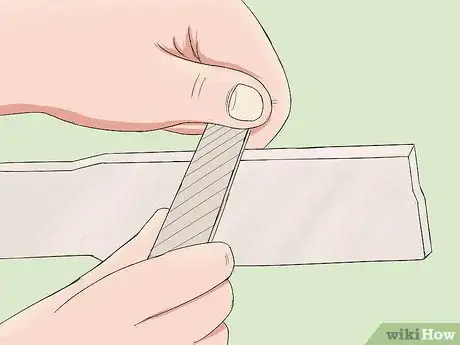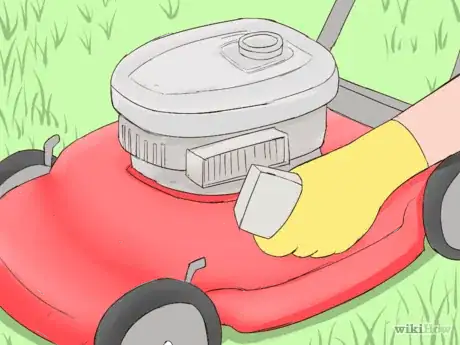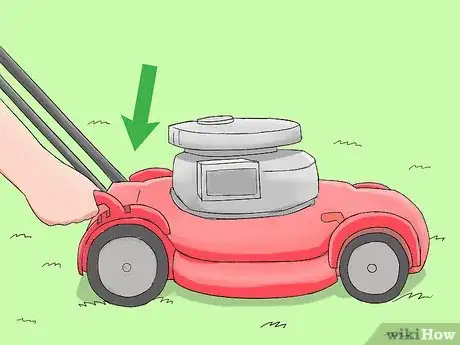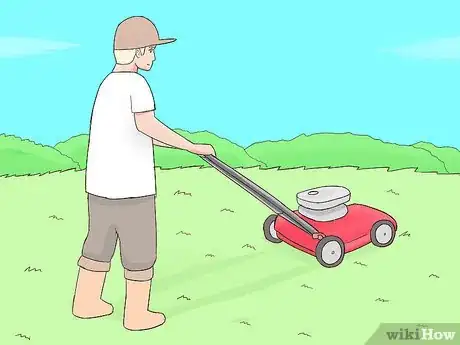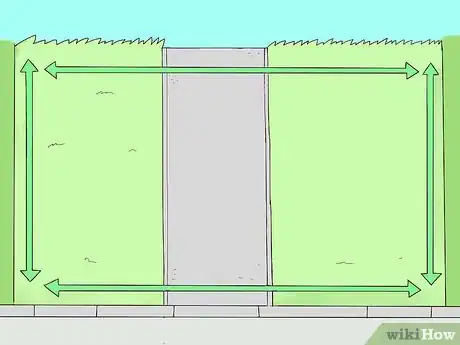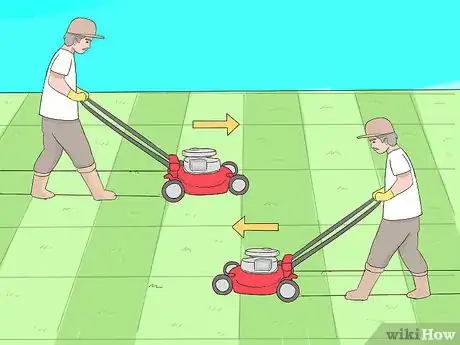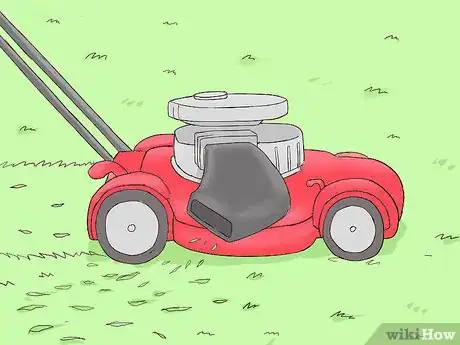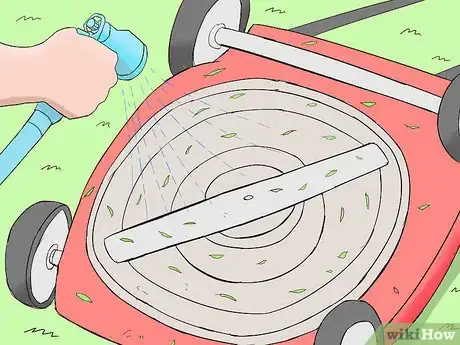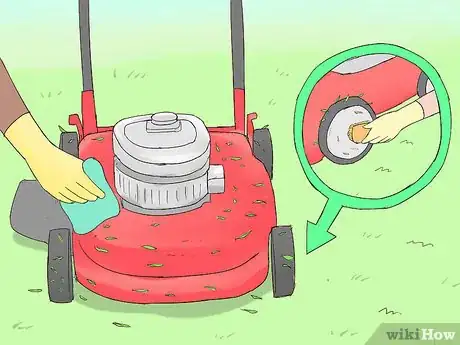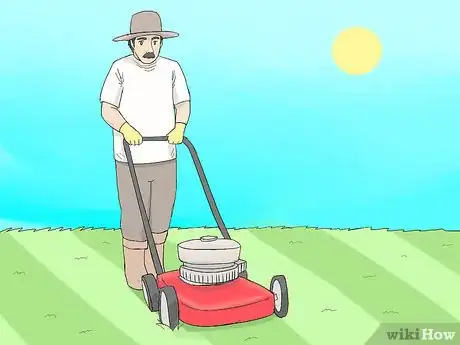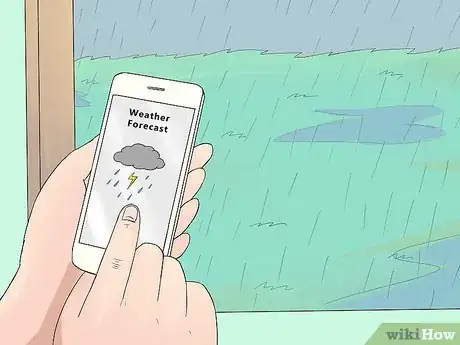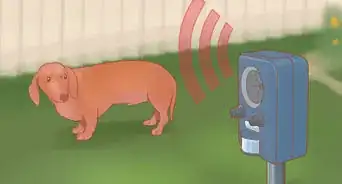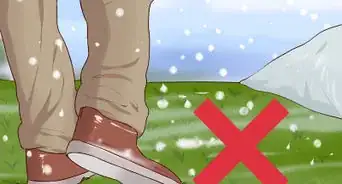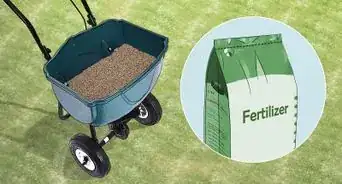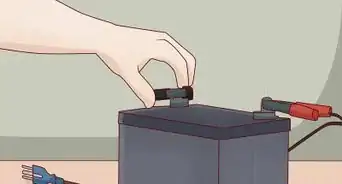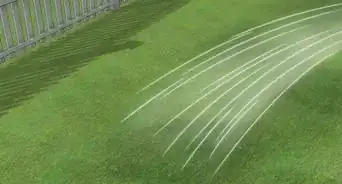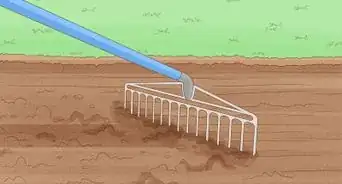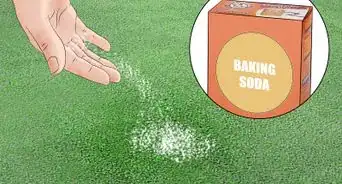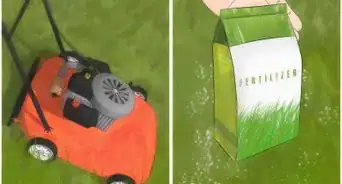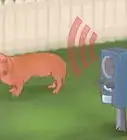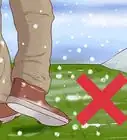This article was co-authored by Anthony "TC" Williams. Anthony "TC" Williams is a Professional Landscaper in Idaho. He is the President and Founder of Aqua Conservation Landscape & Irrigation, an Idaho Registered Landscape Business Entity. With over 21 years of landscaping experience, TC has worked on projects such as the Idaho Botanical Garden in Boise, Idaho. He is a Idaho Registered Contractor and a previously Licensed Irrigator in the State of Texas.
There are 7 references cited in this article, which can be found at the bottom of the page.
This article has been viewed 32,762 times.
While it’s always preferable to mow in dry conditions, sometimes mowing a wet lawn is unavoidable. If you need to mow wet grass, you'll need to make certain adjustments to your mowing routine to accommodate for wet conditions . By mowing more frequently and taking good care of your lawn mower before, during, and after your mow-job, you’ll be able to maintain a tidy lawn even in the wettest of times.
Steps
Preparing Your Lawn Mower
-
1Spray silicone lubricant on the underside of the mower's deck. This silicone spray will prevent wet grass clippings from sticking to your lawn mower. It may make it easier to clean up afterwards as well.[1]
-
2Sharpen your mower blades. Mowing a wet lawn can have a shredding effect on your grass, which makes for an uneven cut. Avoid shredding your lawn by mowing wet grass with freshly sharpened blades, which will ensure a clean, consistent mow.[2]
- Check your lawn mower's blades regularly to make sure they are straight and balanced. Check for any nicks or scratches in the blade. If you notice any of these issues, you may need to replace your blade.
Advertisement -
3Use a fuel stabilizer. Wet conditions can damage your lawn mower when excess fuel mixes with outside moisture. Protect your engine by limiting the amount of fuel you put in your gas tank to a minimum - only as much as you’ll use in one mow session - and by adding 1 oz. of liquid fuel stabilizer to your fuel tank for every 2 oz. of fuel.[3]
-
4Check the air filter to make sure it is clean and dry. Remove the air filter cover from the top of the lawn mower. If it is damp or dirty, you may need to replace it before you can mow your lawn. You can buy a new air filter from a hardware store. Simply take out the old filter and put in the new one before replacing the cover.[4]
-
5Raise your mower deck to cut between 3-4 inches (7-10 cm). On lower settings, wet grass has a tendency to clog your mower's undercarriage. Avoid this by setting your mower deck to one of the highest settings, and settling for a grass trim rather than a lawn shave.[5]
- Never put your hand or foot under the mower while the engine is on. Even if the blades are not turning, you may still get injured. Only check the mower while it is off.
-
6Turn on the lawn mower just before mowing. Once you have checked everything, make sure that the mower is running properly. Run the engine at full throttle to make sure everything is working.
Mowing the Grass
-
1Cut your grass slower than usual. The blades of your mower will need to work harder to cut through wet grass. In turn, you'll need to mow your lawn at a slower rate than usual. This means either pushing your lawn mower about 50% slower than you normally would, or planning on going over areas several times.[6]
-
2Move through your yard in half-row intervals. After mowing your first row, move only half an interval away, such that your lawn mower will be going over a row composed of half-cut and half-uncut grass. Doing so will help your mower blades cut more effectively, as they'll only be cutting half the volume of grass as a typical row.[7]
-
3Mow the perimeter of the lawn first. Start with the edges of your lawn, and work your way inward. Your mower blades will be running over half-cut and half-uncut grass as you move progressively inward, which will help ensure that you aren’t overworking your blades.[8]
-
4Mow in multiple directions. Long, wet grass has a tendency to lie down on your lawn, which can make it difficult to trim when you mow the lawn in uniform strokes. Mow your lawn in both horizontal and vertical paths to make sure you get an effective mow.
-
5Use the side discharge to remove grass as you mow. Bagging or mulching wet grass is messy and difficult to deal with. Instead, use your side discharge, and rake away the grass shavings from your lawn later, after you’re finished mowing.[9]
- Do not go over lawn that you have already mowed. The grass clippings might build up in the mower and block the mower's blades.
Maintaining Your Mower in Wet Conditions
-
1Clean the underside of your mower deck as soon as you’re finished mowing. An accumulation of damp grass clippings in your mower deck can cause mold to develop and potentially damage your motor. Clean the deck with your mower’s washout port, and scraping away any remaining grass with a putty knife or a wire brush.[10]
-
2Clean the wheels and body of your mower. Once you’re finished cleaning the deck, you’ll want to clean the rest of your mower as well. Use a rag or towel to wipe down the body of your mower, and use a wire brush to clean excess grass from your wheels. Spray any exposed cabling with lubricant and the blade with a rust-resistant oil. Dry the mower when you are done with a can of compressed air.[11]
- Always keep a few clean spark plugs and air filters on hand. This way you can easily replace them if they become damp or dirty from the wet grass.
-
3Mow more frequently. Cutting wet grass is especially difficult if your grass is long and overgrown to begin with. If you’re managing lawns in the midst of a wet season, it’s recommended that you mow your lawn in shorter intervals than usual. For example, if you typically mow once a week, you should be mowing once every 4-5 days during a wet season.[12]
-
4Never mow your lawn when it's raining outside. Exposing your lawn mower to rainy conditions will damage the engine, and operating the mower in the rain can be hazardous to your safety as well, especially if you are working on uneven or sloped ground.
Community Q&A
-
QuestionWhat about mowing with an electric mower... is it safe?
 Myhouse2345Community AnswerElectric mowers are water-resistant, so a little bit of water won't cause any harm. It should be okay, as long as your lawn doesn't have water puddles and your grass is not too wet.
Myhouse2345Community AnswerElectric mowers are water-resistant, so a little bit of water won't cause any harm. It should be okay, as long as your lawn doesn't have water puddles and your grass is not too wet.
Things You’ll Need
- Lawn mower
- Blade sharpener
- Fuel stabilizer
- Putty knife
- Wire brush
- Spray lubricant
- Towels
- Air compressor with nozzle
References
- ↑ https://www.consumerreports.org/cro/news/2010/03/tip-of-the-day-clean-the-deck-on-your-lawn-mower/index.htm
- ↑ https://ryanlawn.com/6-tips-to-use-when-mowing-after-rain/
- ↑ https://www.youtube.com/watch?v=xmciGyaBzCU&feature=youtu.be&t=3m24s
- ↑ https://www.repairclinic.com/Lawn-Mower-Maintenance-Tips
- ↑ https://www.bobvila.com/articles/mowing-wet-grass/#.WawrmCMrIY0
- ↑ http://homeguides.sfgate.com/mow-grass-after-rains-23974.html
- ↑ http://homeguides.sfgate.com/mow-grass-after-rains-23974.html
- ↑ http://homeguides.sfgate.com/mow-grass-after-rains-23974.html
- ↑ https://www.bobvila.com/articles/mowing-wet-grass/#.WawrmCMrIY0
About This Article
Although it’s better to mow dry grass, there are a few ways to help your mower cope when cutting wet grass. If you can adjust your mower’s height, raise it 3 to 4 inches so there will be less chance of grass clogging the undercarriage. Mow half as slowly as you normally would, since the blades will have to work harder to cut through wet grass. Whenever you start cutting a new row, move your mower so it’s only halfway on the next row. That way, your blades will work more effectively, since they’re not cutting as much grass at one time. Wet grass tends to lay flat, so cut your lawn in multiple directions so you don't miss any spots. For more tips from our Landscaping co-author, including how to protect your mower’s engine from excess moisture, read on!

